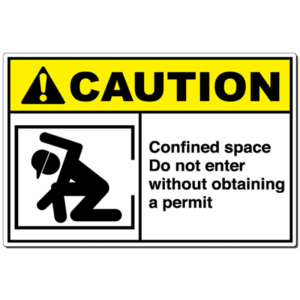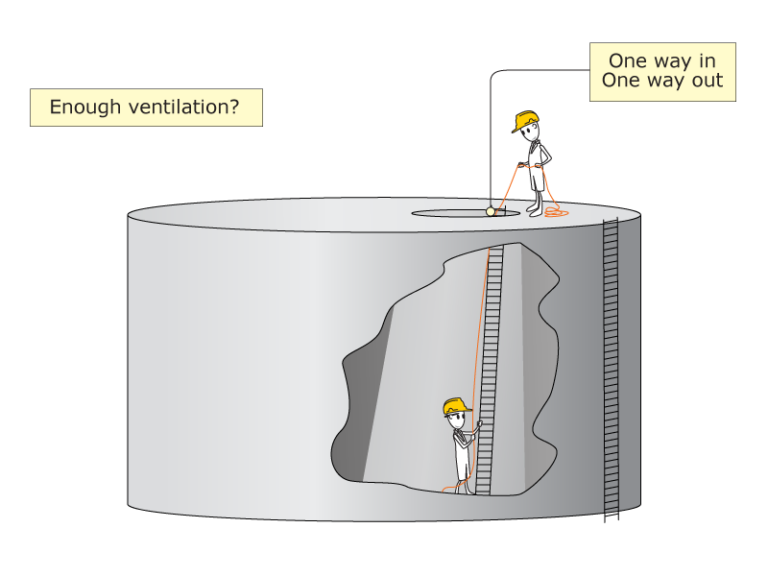Introduction
The aim of this toolbox talk is to increase awareness of the general hazards associated with confined spaces. This includes…
- what a confined space is
- examples of confined spaces
- hazards & risks from confined spaces
- entry into a confined space
Note: Confined space entry is restricted to specialist competent persons (this training is not sufficient to provide competence).
The use of regular toolbox talks, if done effectively, will significantly improve the safety culture within your organisation. This will increase the safety awareness of the workers, and as a result reduce the likelihood of accidents and unsafe occurrences.
Legislation references
- Health & Safety at Work Act 1974
- Management of Health & Safety at Work Regulations 1999
- The Confined Spaces Regulations 1997
Safety in confined spaces
Confined spaces are defined as…
- anywhere with limited access or means of escape
- areas that have a hazardous atmosphere or contain dangerous substances
- areas where there is a risk of trapping or drowning
- tanks, vessels, etc. that were not designed to be worked in

The following are examples of confined spaces:
- Plant rooms that may contain a hazardous atmosphere.
- Sewers.
- Manhole access.
- Silos.
- Tanks or vessels.

Hazards when working in confined spaces
- Low levels of oxygen.
- Presence of poisonous fumes, gases or vapors.
- Fire or explosion.
- Physical hazards such as noise, high temperature, falls or electrocution.
- Machinery hazards.
Risks with working in confined spaces
Levels of oxygen can fall below the minimum concentrations required to support life. This often occurs where air is displaced by other gases or similar which are not vented.
Poisonous fumes, etc. often arise from the process. These may be from chemicals used directly in the process (e.g. chlorine) or indirectly from the process (e.g. fumes from an engine producing carbon monoxide).
Flammable gases, dusts or vapors present a serious risk of explosion if ignited. These often occur in vessels or where bio-degradation takes place such as in sewers or cesspits.
Noise, heat or the presence of mechanical or electrical risks arise in the process or from utilities on the site.
Risks may develop with time and all must be monitored during a confined space entry.
Entry into confined spaces
- Confined space entry is restricted to specialist competent persons (this training is not sufficient to provide competence).
- Entry to a confined space is controlled by a Permit to Work.
- No entry should be undertaken unless a detailed risk assessment has been completed.
- All work is to be closely supervised.
- A detailed entry procedure will be documented prior to entry on each occasion.
- If you have a medical condition that may be affected by entry into a confined space you must inform your manager or supervisor.
- Systems must be established for safe rescue in case of emergency.
- If in doubt, do not enter!

